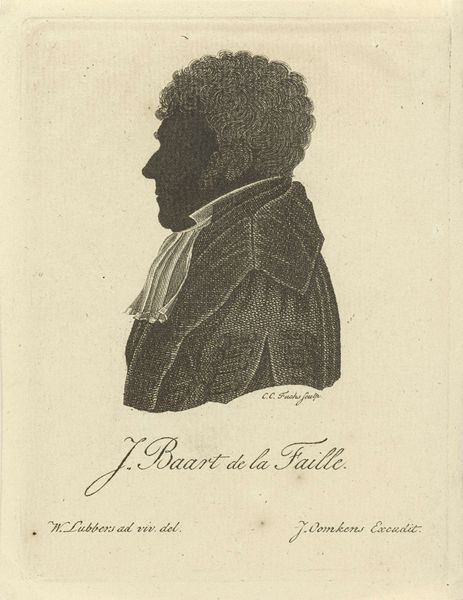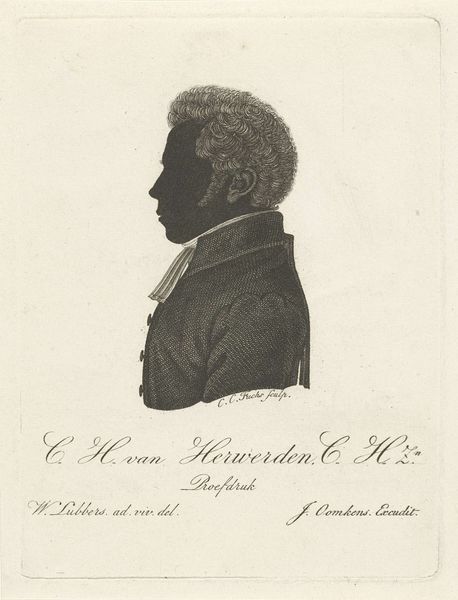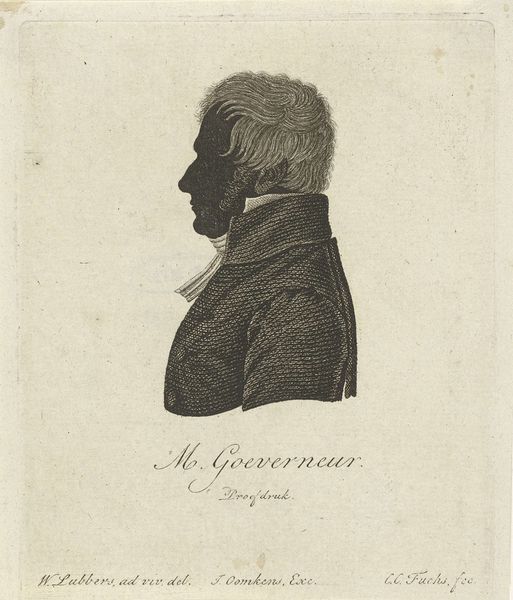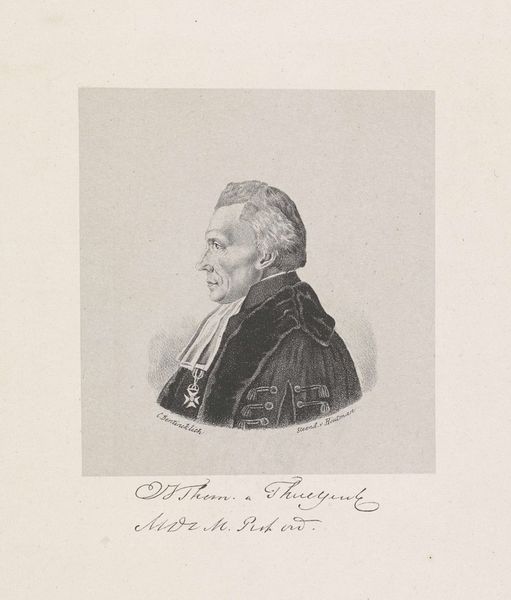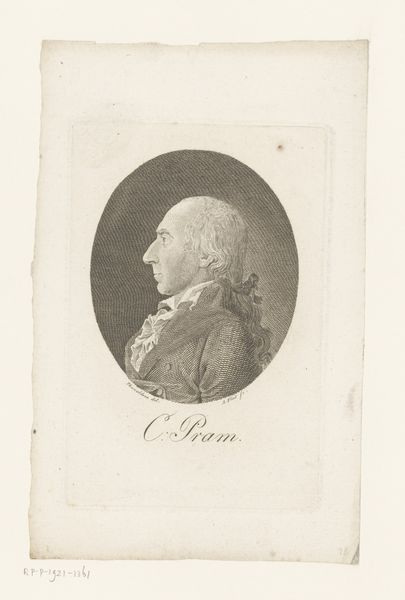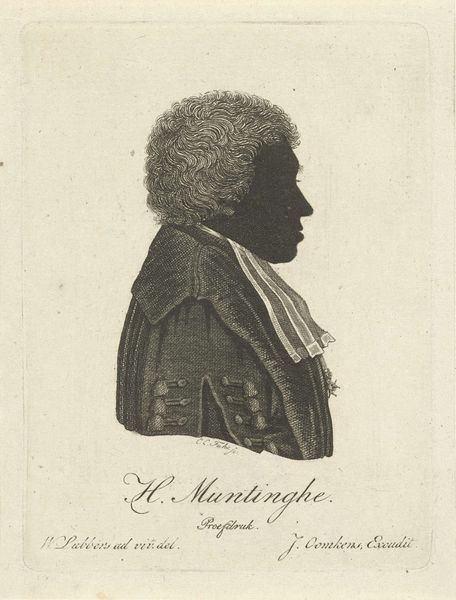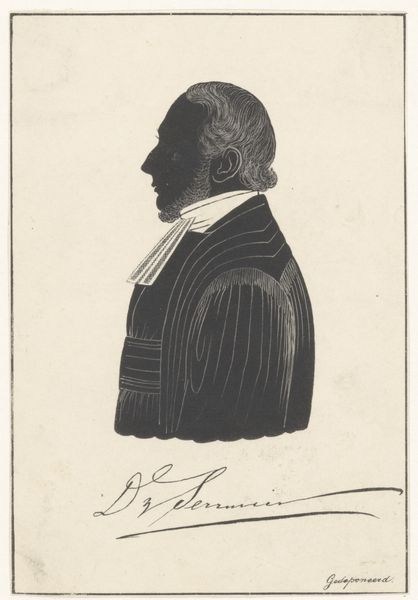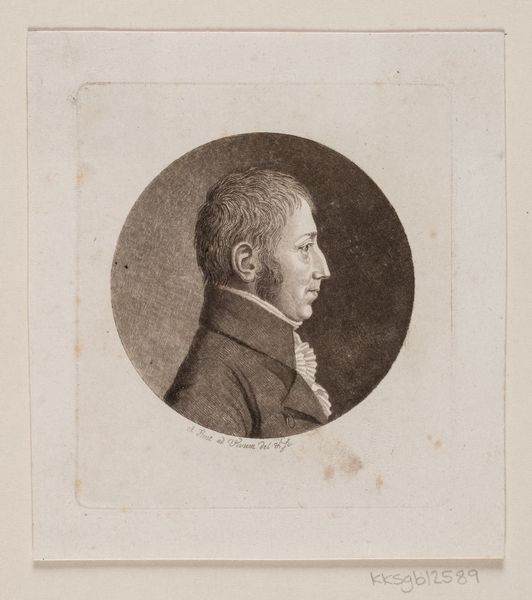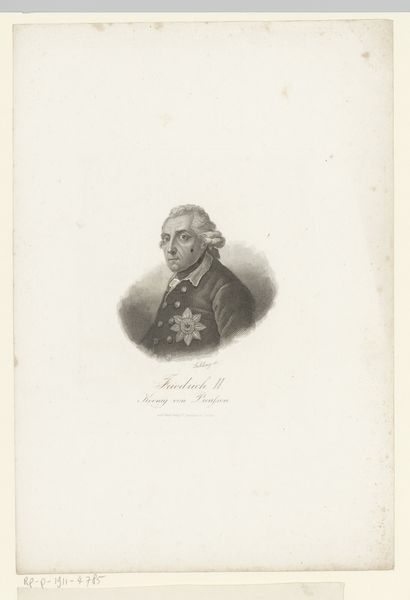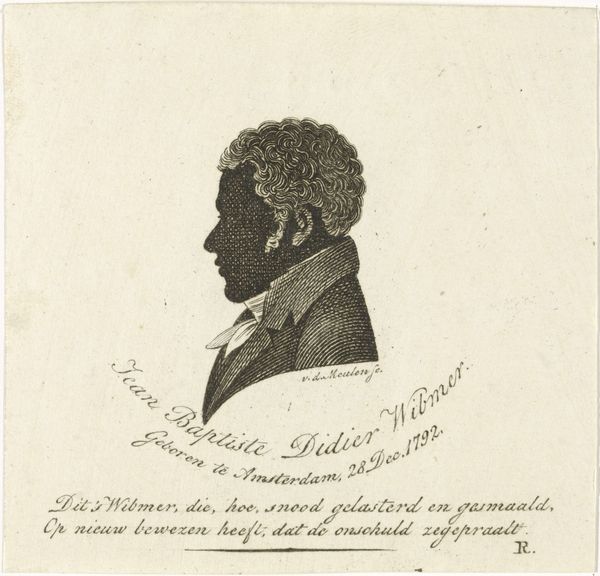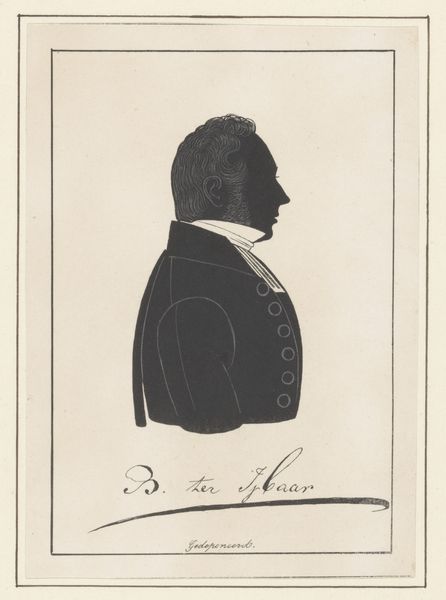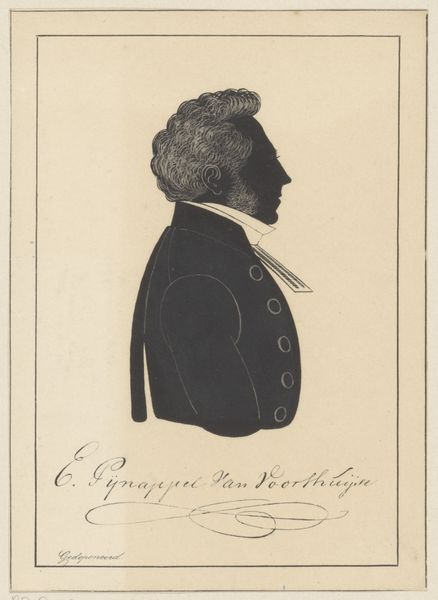
print, engraving
#
portrait
#
neoclacissism
# print
#
old engraving style
#
line
#
engraving
#
realism
Dimensions: height 118 mm, width 85 mm
Copyright: Rijks Museum: Open Domain
Editor: So, here we have Carl Cristiaan Fuchs' "Silhouetportret van Gerbrand Bakker," created in 1828. It’s an engraving, a print, currently housed at the Rijksmuseum. I'm struck by the contrast – it’s so stark and clear, with incredible detail in the lines despite the simplicity of a silhouette. How do you interpret this work, focusing on its form? Curator: The pure linearity and stark contrasts command immediate attention. Notice the artist's command of line – how it defines the figure, creating texture, especially in the hair and the detailing of the jacket. Do you observe how the artist utilizes negative space to enhance the form's definition? Editor: I do. It’s the use of those thin white lines on the dark silhouette, to outline the garment, but it is quite subtle. They prevent the whole silhouette from being just a solid dark shape. They give dimension to the whole. Curator: Precisely. The piece exists as a balance between surface and depth. The linearity, its quality as a graphic image, emphasizes the surface. And how would you describe the impact of this kind of starkness? Editor: Austere? Stripped down? There isn’t anything to hide behind. I guess this enforces a very rigid image. What is the effect of using only the silhouette? Curator: It directs us to focus on the outline, on form itself. The work asks us to examine what can be conveyed through shape and line, devoid of the nuances of color or modeled form. What visual vocabulary is presented here? We should look to line and shadow, contrast, and the economy of means employed by the artist. Editor: It is about distilling a likeness to its most basic elements, and it is certainly impressive how much is still there! I will keep my eyes peeled for how negative space can work. Curator: A good practice, and a good observation about reduction. Considering this portrait, our perspective has become one of refining our comprehension.
Comments
No comments
Be the first to comment and join the conversation on the ultimate creative platform.
